#Schiavona
Text
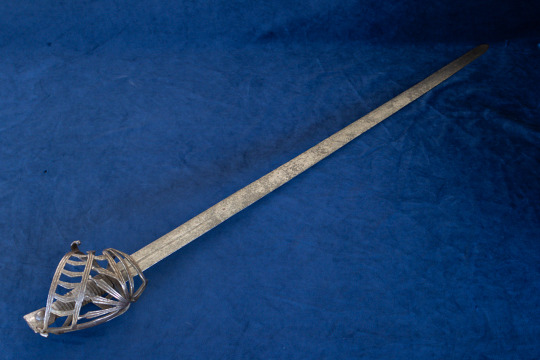
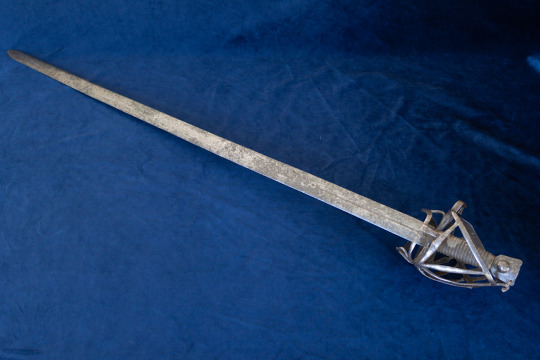
Early 18th Century Venetian 'Schiavona' Sword
The Schiavona is an iconic basket-hilted sword that was closely associated with the Italian city state of Venice. The earliest examples are believed to have come from an elite body of Slavic soldiers hired by the Venetian council, and date back as far as the late 16th Century.

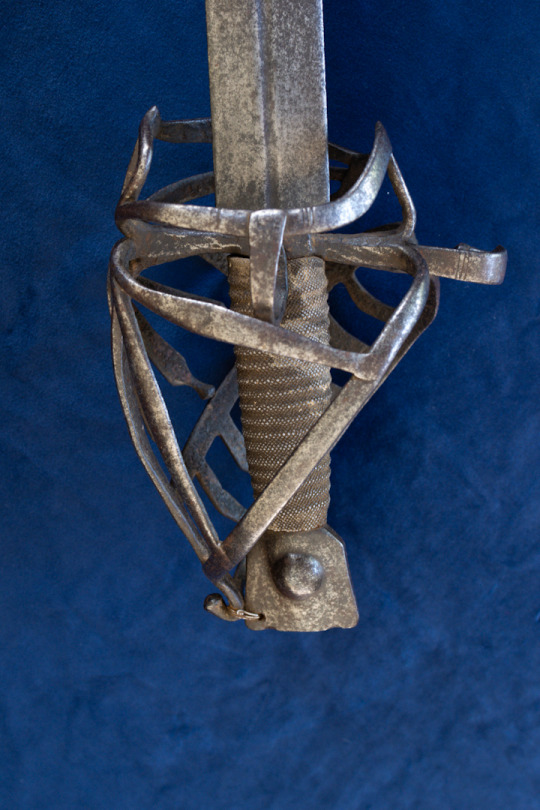
Schiavona are identified by their unique basket hilts and 'cats head' pommels. The renowned sword historian and author, Ewart Oakeshott grouped the schiavona basket hilts into two broad categories, the simplified Type 1 with it's broad flat bars, and the Type 2 of lattice work design.
They Type 1 hilt began to appear around the early 1600's and the first Type 2 between 1620 and 1630. Type 1's remained in use for most of the 17th Century after which Type 2 hilts became dominant.
Over the life of schiavona swords, (1600 - 1797) their hilts became increasingly complex and ornate as they became associated with the character of Venice, with the upper levels of society also carrying their own schiavonas.



Based on the features of the hilt, this sword most likely dates to 1710 - 1740. The iron pommel and 93 cm blade suggest that it is of munitions grade and was likely carried by a regular cavalry man.
Stats:
Overall Length - 1,075 mm
Blade Length - 930 mm
Point of Balance - 165 mm
Grip Length - 135 mm
Inside Grip Length - 94 mm
Weight - 1,090 grams
#swords#antique swords#military antiques#Italian#City of Venice#Cavalry swords#Schiavona#18th Century#Broadsword#basket hilt#Italian Basket Hilt
238 notes
·
View notes
Text
The sword of the day is the schiavona.

This is an Italian sword, very similar to the Scottish basket-hilted broadsword I’ve featured, though this one was developed about a century earlier. It was first created in the Venice, and was carried by Slavic, Dalmatian, and Croatian mercenaries, who gave the sword its name and essentially comprised the standing army of the Venetian Republic. The defining feature of this sword is the basket hilt, different than the one used in the Scottish broadsword but just as ornate.
24 notes
·
View notes
Text

A nice family picture before these schiavonas are sent to their forever homes..
24 notes
·
View notes
Text

Tattoo concept I was asked to come up with.
#rider art#sketch#tattoo concept#d&d#gross messer#lang messer#schiavona#swords#d20#me still thinking it’s 2020
8 notes
·
View notes
Text
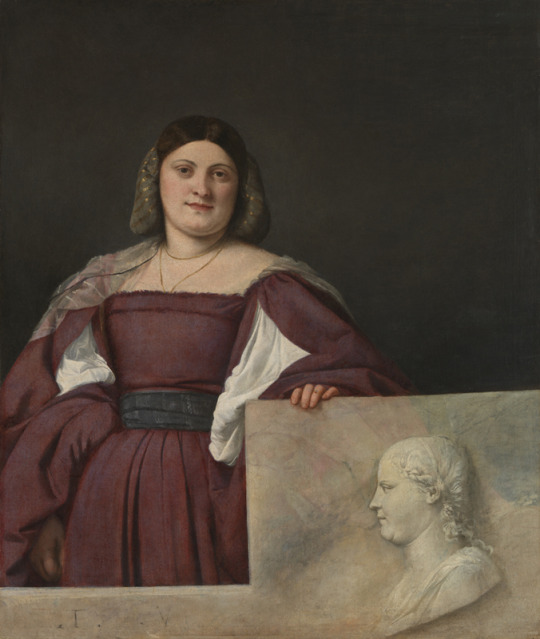
Portrait of a Lady or La Schiavona, Titian, 1510-12
#portrait of a lady#la schiavona#titian#1510#1511#1512#1510s#1500s#16th century#renaissance#Italian renaissance#venetian renaissance#painting#art#portrait
26 notes
·
View notes
Text
self portrait

#I wanted to do a schiavona#but those hilts are waaaaaaaaaay too complex for a mouse#Self-portait#MousePaint
6 notes
·
View notes
Text
Wait thinking ab Shu with a schiavona💞
#me. i'm the schiavona /j#no but jokes aside i think a fancy basket-hilted sword would fit his aesthetic#ensemble stars
7 notes
·
View notes
Text

Schiavona for an officer, Venice, Italy, dated 1713
from Czerny's International Auction House
508 notes
·
View notes
Text
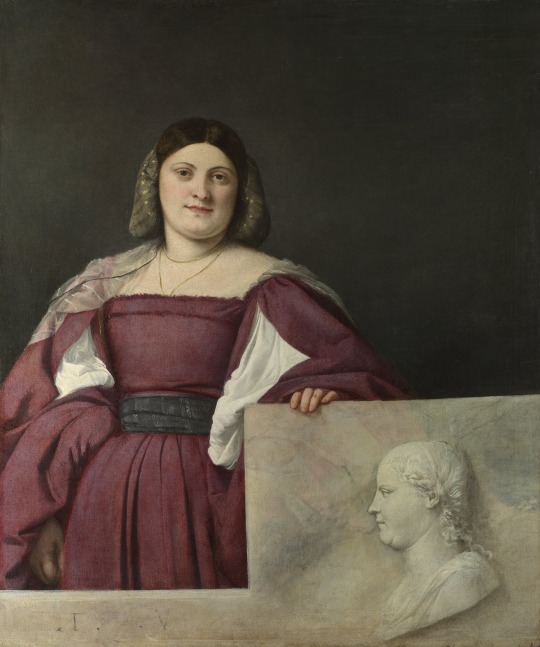
1 note
·
View note
Text

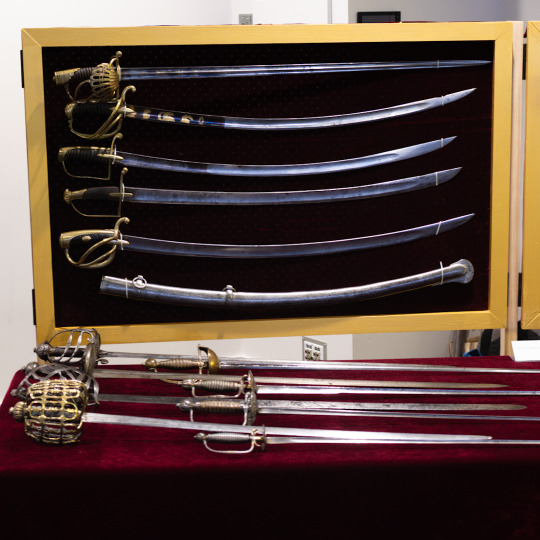
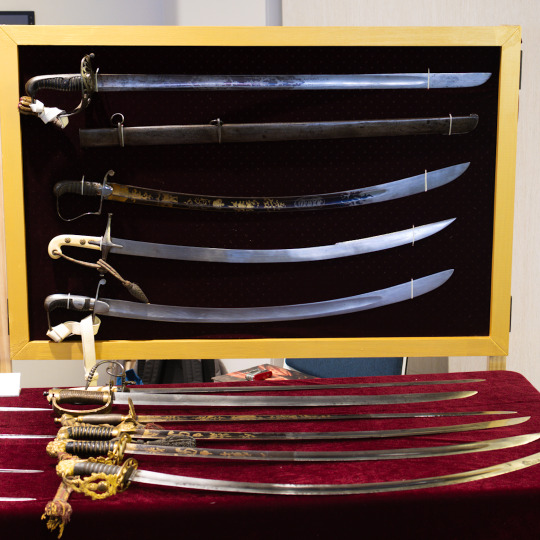
Photos of the sword display I had at last weekends excellent Auckland Blade and Knife show.
Was great to see meet with New Zealand's very talented knife makers showing off their work. Truly inspiring works of art.
For my display I opted to have a selection from the collection that covered a broad range instead of focusing on the one topic.


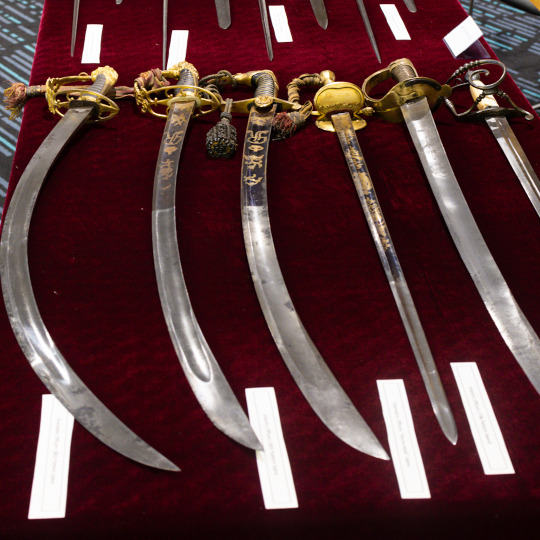
It was also my first use of the new boards I made after the last show. These are on their own stands giving me more table space.
Despite being a bit rough about the edges (remember folks, measure twice, cut once 🤣) they worked well. The next challenge is to improve on how the swords are mounted. Cable ties work great, but they're fiddly to pass through the cloth backing while trying to hold up a sword at the same time.
My thanks to The Auckland Blade Show for organising such a great event and for allowing me to participate. Shows like these are key to showing people just what is available and possible.
#swords#antiques#napoleonic wars#military antiques#british army#sabre#cavalry#Shows#Displays#Walloon Sword#Schiavona#Smallsword#Baskethilt#Spadroon
139 notes
·
View notes
Text

Basket hilted schiavona, Venice, Italy, 16th century
from Czerny's International Auction House
399 notes
·
View notes
Text

Titian - La Schiavona (1510-12)
135 notes
·
View notes
Text
Highlighting LGBTQIA+ spiritual traditions.
youtube
This is from Candelora 2023, held at the Sanctuary of Montevergine in Avellino, Italy in honor and invocation of Mama Schiavona who protects the Femminielli. The Femminielli are their own gender, native to what is now Southern Italy. They bring good luck and have been a part of the sacred landscape of Southern Italy for pretty much all of recorded history. Naples itself never historically persecuted homosexuality, even when many other parts of Europe did the opposite.
In addition to Candelora, the Femminielli also participate in the feast of la Madonna dell'Arco and the Easter Monday tradition of the matrimonio dei femminielli--a magnificent ritual wedding celebration.
There are some very old non-binary genders in this world, particularly around the Mediterranean. Some Femminielli may identify as Trans Women while others may not. Gender is complicated. The Femminielli serve a vital spiritual role to the religious hygiene of their communities. Bringing good luck, joy, and blessings to all from the depths of time itself.
In the video, I think I hear the familiar voice of Roberto de Simone--the very same musical legend responsible for the Neapolitan Opera, "La Gatta Cenerentola," which also features Femminielli in the cast. I did a dive on that one a while back. You can also see musicians gathering to sing and drum for Mama Schiavona. The music they are singing for her is a Tammurriata. Tammurriata refers to the rhythm as well as the dance of the same name that goes with it. The giant tambourine you see in this video is called a tammorra and that rhythm is absolutely ancient.
These are extremely devout lay people who are performing this invocation. They have processed here through the city to the sanctuary and this is just how it is done. They have come to pray for protection of the marginalized and to celebrate everything Mama Schiavona and the Femminielli stand for. This is what folk religion looks like.
205 notes
·
View notes
Text

1520s Giovanni Busi (Cariani) - Portrait of woman ('La Schiavona')
(Accademia Carrara / ASST Papa Giovanni XXIII Hospital)
56 notes
·
View notes
Note
Hello! I am just starting my journey on reconnecting with my traditional roots as an Italian practitioner. My great grandparents came from Italy in the mid 1900s, but unfortunately passed before I had the pleasure of asking about their practices. Can I ask a good starting point for someone who is trying to reconnect all on her own?
Hello!
I am so happy that you are wanting to reconnect with your roots! I'm sorry you didn't get the opportunity to ask your grandparents, my deepest condolences for your loss.
In terms of resources, my recommendation for anyone starting out is to go to folklore sources or to read books by authors who don't simply reference other witchcraft authors. I highly recommend reading Italian Folk Magic: Rue's Kitchen Witchery by Mary-Grace Fahrun. It's mostly her personal experience with Italian folk-Catholicism and magic with plenty of anecdotes, recipes, superstitions, and various rituals. I think it's probably the best widely available source out there. She also has a youtube channel! In a similar vein, the website Italian Folk Magic has some great posts about Southern Italian and Sicilian magic.
Other online resources I've found useful are Gail Faith Edwards' writings on Southern Italian healers and folk medicine (it's split into 2 parts–– there's a lot of great information if you're into herbalism/ green witchcraft). I also love this article detailing witchcraft history, superstition, and more throughout Italy. It goes into a lot of detail and has some information about herbal properties and their uses as well.
Here are some festivals and traditions from across Italy tied to folk belief: Focara of Novoli, The Campanacci in Basilicata, The Feast of San Domenico and the Ritual of Serpari of Cocullo, Naca Procession in Southern Italy, Dance of the Devils, Celebration of Santa Lucia, The Feast of Mamma Schiavona––There are many others (mostly Saint feasts) that have pre-Christian roots or have significant rituals attached.
Most information that I have collected comes from anthropological and folklore sources that aren't very accessible. There are some videos available of documentary footage of Italian anthropologist Ernesto de Martino's work detailing folk tradition: here's a clip of La Taranta. This documentary isn't in English, however you can still get a lot out of it even if you don't speak Italian (unfortunately there are no subtitles). The documentarian that worked with de Martino, Luigi Di Gianni gives some of his recollections here. Here is a clip documenting the Feast of Mamma Schiavona. Otherwise, everything else is behind a paywall on sites like jstor, sagepub, and other academic publishers. I would recommend reading anything by anthropologist and folklorist Sabina Magliocco (I have copies of her work), as well as de Martino's Magic: A Theory from the South (which I also have a pdf of). The academic texts can be a little dense and daunting, but they're worth the read.
I have uploaded some of what I have to WeTransfer, but it will only be up for 1 week (until July 10th) so if anyone else would like to download them, you can for a limited time!
#italian folk magic#folk magic#folk traditions#witchcraft#beginner witch#baby witch#witchblr#italian witchcraft#grimoire#book of shadows#streghe#stregoneria#benedicaria#witch tips#long post#witches of tumblr
89 notes
·
View notes
Text
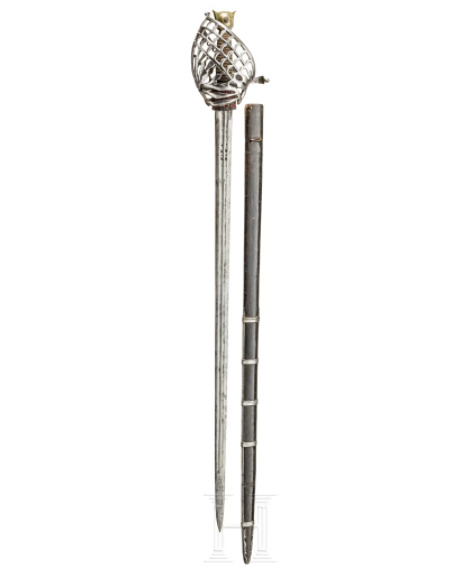
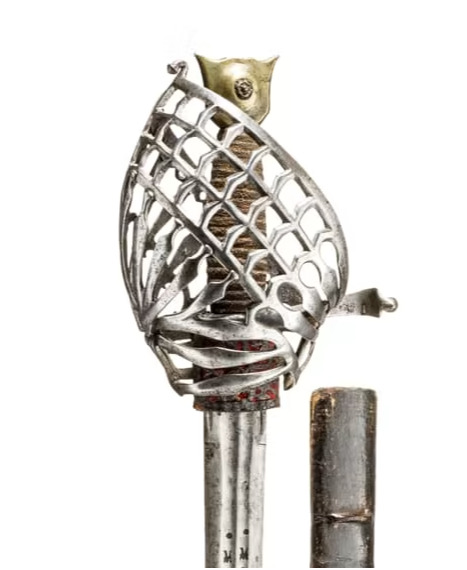
Venetian schiavona, early 18th century
from Hermann Historica
85 notes
·
View notes